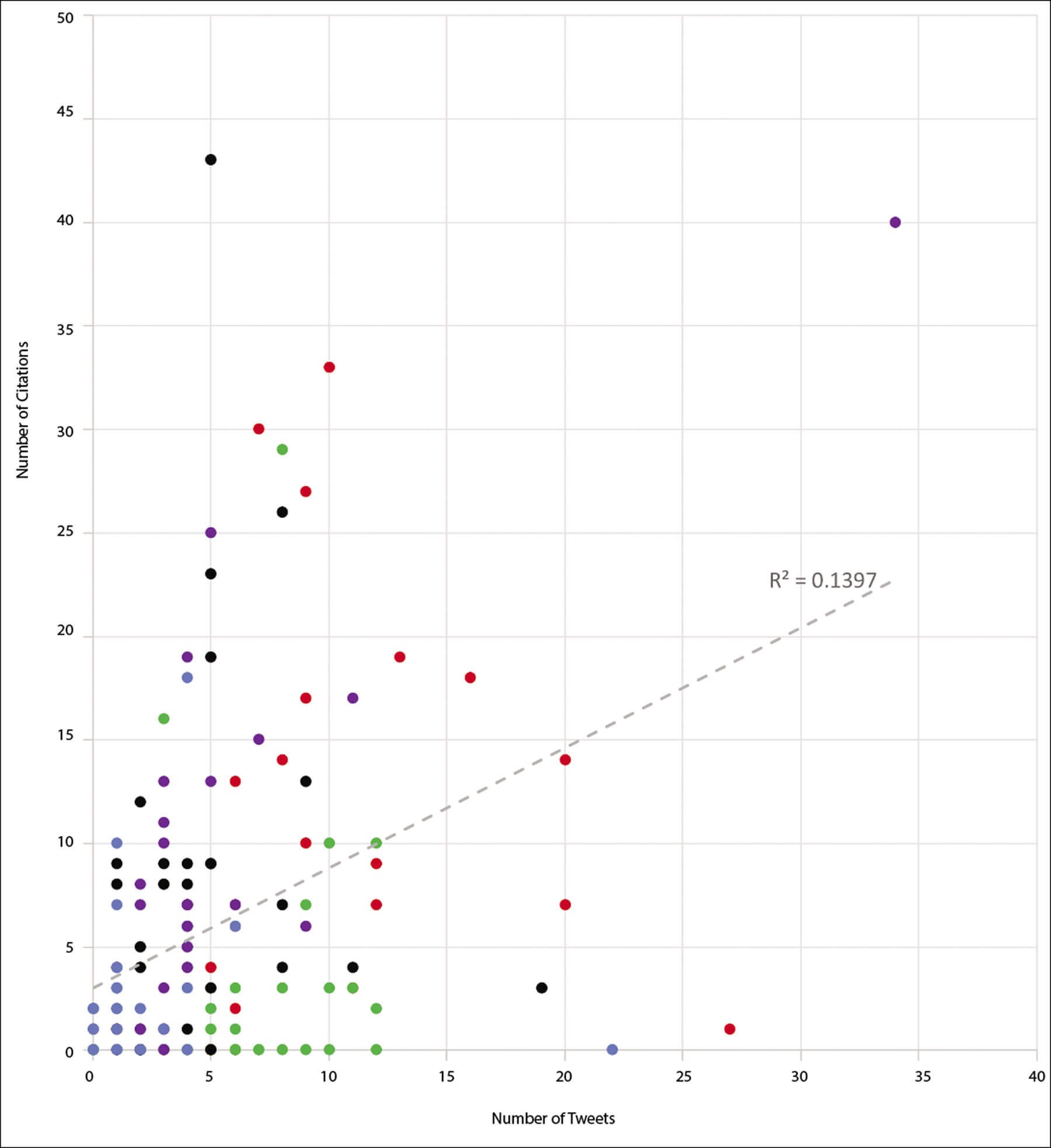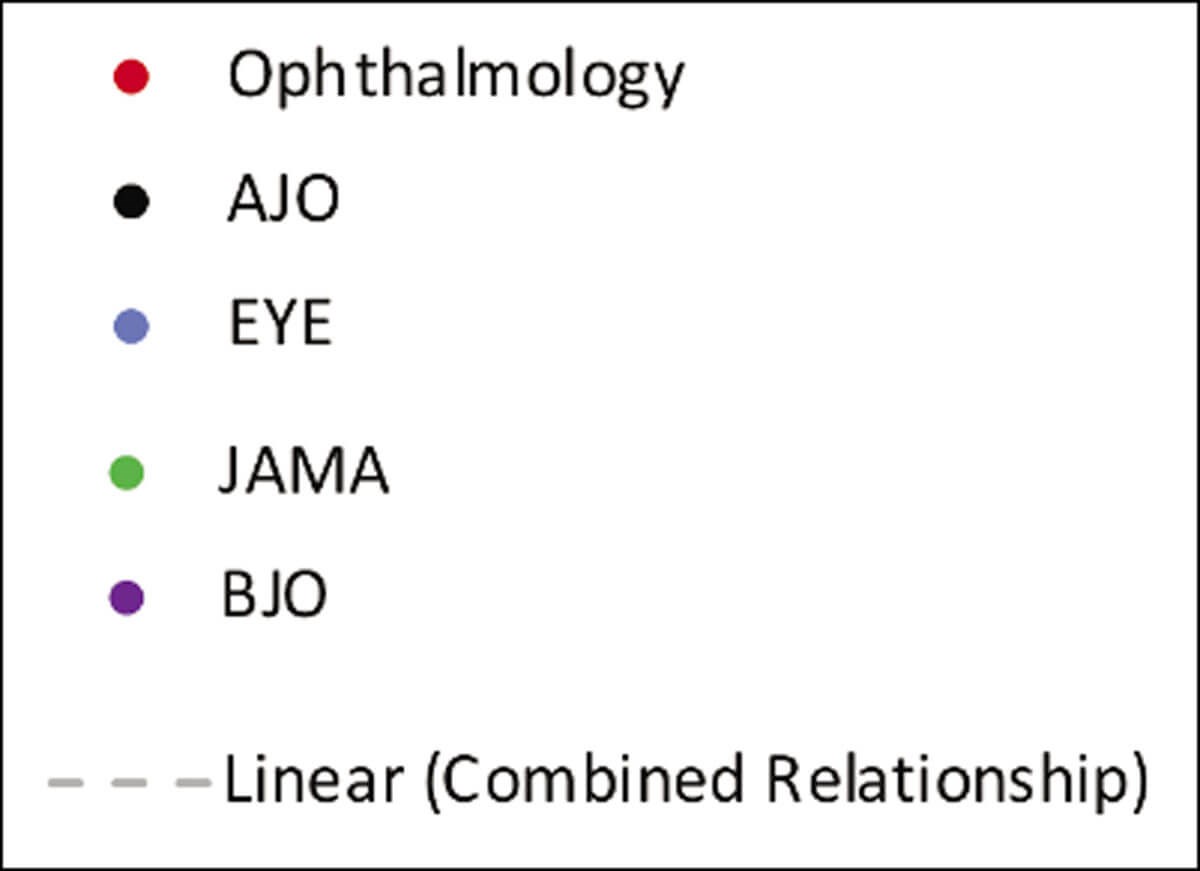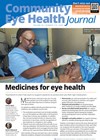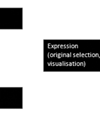*Equally contributing co-first authors.
The authors investigate the link between ‘tweets’ and citations for 155 articles from five key ophthalmology journals.
Social media’s impact on our lives has been significant, allowing easy discussion of topics worldwide. An increasing number of peer-reviewed journals now calculate the online attention an article receives using Altmetric or PlumX metric scores to weigh the digital popularity of a journal article across social media platforms, particularly Twitter, and mainstream news websites.
Twitter is a free social network service estimated to have a total of 187 million registered daily users [1]. Some studies have demonstrated a role for Twitter in boosting journal article impact in other fields [2,3], but this has not yet been assessed specifically in the field of ophthalmology. Herein, we assessed whether Twitter could play a role in boosting the impact of ophthalmology journal articles.
Methods
We identified five clinical ophthalmology journals reporting number of ‘tweets’ per article: Eye, British Journal of Ophthalmology, American Journal of Ophthalmology, JAMA Ophthalmology and Ophthalmology. We analysed all articles published in December 2018, recording the number of tweets and citations per article. All data were collected on 26 December 2020. We assessed the correlation between tweets and citations per journal using Pearson’s correlation testing. No ethical approval was required as all data were freely available within the public domain.
“Our study suggests that the Twitter popularity of an article could contribute to its citation rate”

Figure 1: Scatter plot showing overall correlation between the number of tweets and the number of citations for all articles in various clinical ophthalmology journals.


Key: AJO = American Journal of Ophthalmology, BJO = British Journal of Ophthalmology.
Results
A total of 155 articles were analysed from all five journals. Our analysis is summarised in Table 1 and Figure 1. When combining all five journals, there was a moderately positive and statistically significant correlation between tweets and citations. When limiting to individual journals, the British Journal of Ophthalmology demonstrated a strongly positive and statistically significant correlation between tweets and citations, while Ophthalmology demonstrated a moderately positive and statistically significant correlation therewith. When restricting to original research articles, this correlation generally decreased, but remained statistically significant when combining all five journals and for the British Journal of Ophthalmology alone.
Discussion
To our knowledge, this represents the first study to assess the correlation between number of tweets and citations within the ophthalmological literature. Our study suggests that the Twitter popularity of an article could contribute to its citation rate. However, this does not apply uniformly across all cases. Other factors may have contributed to the reported findings and warrant further investigation, including: the type of articles published and the proportion of these per journal; factors relating to exposure, such as the number of ‘followers’ [4] for an account tweeting a paper or how easily accessible the articles are, with open access journals potentially offering easier availability of its articles and hence more citations [5]. It should be noted we cannot establish a causal effect relation – one could argue that the higher citation rate may boost an article’s popularity on Twitter, or vice-versa. Although this positive correlation has been shown in other fields [2,3], Altmetrics and PlumX metrics are still a novelty, hence a better understanding of how research is shared online would be welcomed.
References
1. Twitter Investor Relations. Q3 2020 Letter To Shareholders. Weblog:
https://blog.twtrinc.com/en/2020/
q3-2020-letter-to-shareholders.html
2. Klar S, Krupnikov Y, Ryan JB, et al. Using social media to promote academic research: Identifying the benefits of twitter for sharing academic work. PLoS One 2020;15(4):1-15.
3. Studenic P, Ospelt C. Do you tweet?: Trailing the connection between Altmetric and research impact! RMD Open 2020;6(3):1-5.
4. Twitter. Following FAQs. Website:
https://help.twitter.com/en/
using-twitter/following-faqs
5. Craig ID, Plume AM, McVeigh ME, et al. Do open access articles have greater citation impact? A critical review of the literature. J Informetr 2007;1(3):239-48.
(Links last accessed August 2021)
Declaration of competing interests: None declared. Dr Rufai is funded by a National Institute for Health Research (NIHR) Doctoral Fellowship Award. This article presents independent research funded by the NIHR. The views expressed are those of the author(s) and not necessarily those of the NHS, the NIHR or the Department of Health and Social Care.
COMMENTS ARE WELCOME












